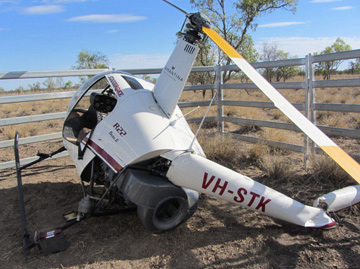
The ATSB is reminding pilots to recognise the implications of abnormal engine indications, after a helicopter lost power in mid-air.
On 13 November 2013, the pilot of a Robinson R22 helicopter was conducting aerial mustering on a property about 155 km SSW of Normanton, Queensland. The helicopter was hovering behind a mob of cattle when the pilot felt the helicopter jerking. He landed and conducted a magneto check (magnetos are a component of the ignition system). He selected the left magneto and the engine rapidly lost power. He then selected the right magneto and the engine ran normally. He reselected the magneto switch to ‘both’ and attempted to get in contact with the property manager.
This accident highlights the importance of understanding the implications of abnormal engine indications.
Unable to make contact with the manager, he elected to take off. Once airborne, he was able to communicate with the manager via the ultra-high frequency radio. He turned the helicopter towards a road and commenced an approach to land on the road. At about 20 ft above ground level, however, the engine stopped. The pilot lowered the collective and flared the helicopter for landing. On impact, the helicopter spun around 180º. The helicopter was substantially damaged, but the pilot was uninjured.
An engineering inspection of the left magneto revealed that the distributor bushing was loose, resulting in 6 mm of movement in the plastic gear wheel. As a result, the magneto was providing the ignition spark to an incorrect engine cylinder at the wrong time.
This accident highlights the importance of understanding the implications of abnormal engine indications.
The Robinson R22 Pilot Operating Handbook advises pilots that, when a magneto malfunction is suspected in-flight, select the magnetos to the BOTH position and land as soon as practical.
Read the final report: Total power loss involving a Robinson R22, VH-STK, 155 km south-south-west of Normanton Aerodrome, Queensland, on 13 November 2013


